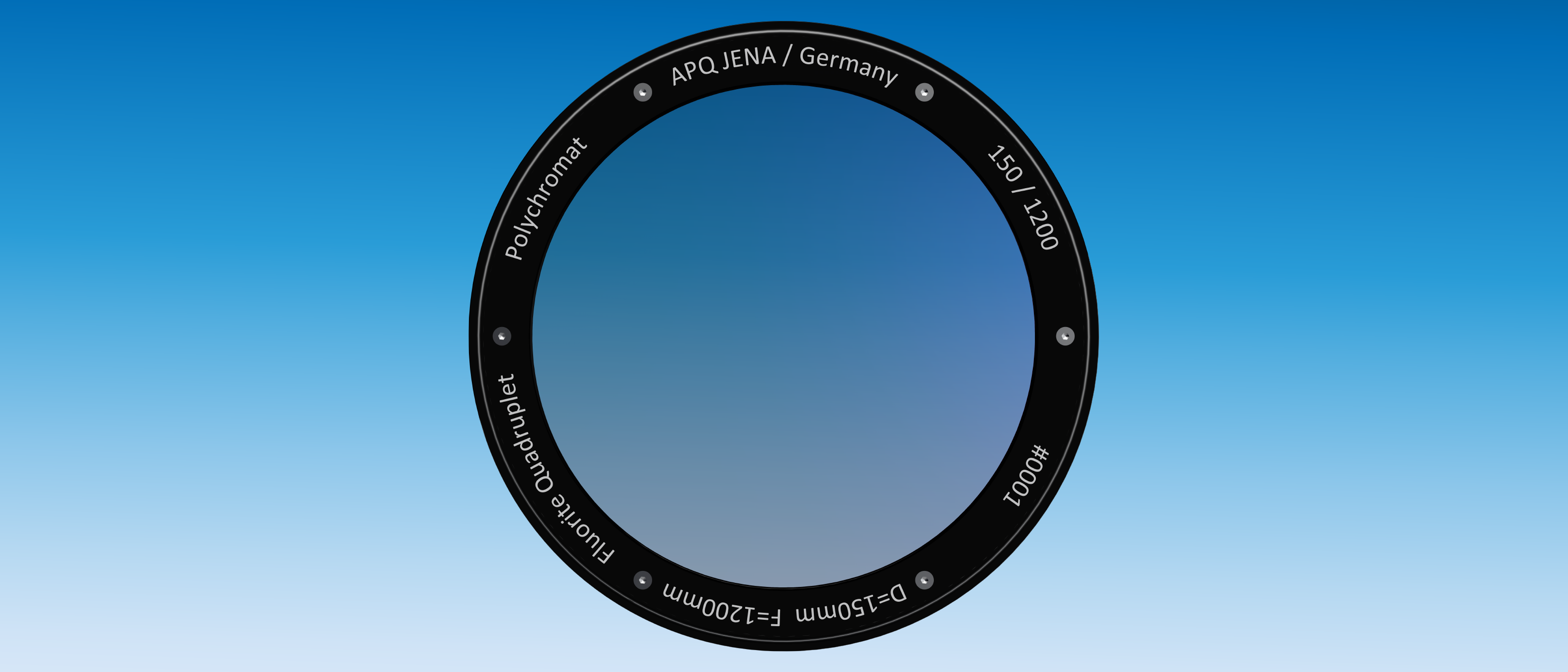APQ Compensation
To ensure that the lens cell is thermally invariant, free of play, and has high centering accuracy, we have developed a thermally compensated optical lens cell (compensation cell) for our Fluorite Quadruplet Polychromats.
The operating temperature range of the new compensation cell extends from -20 °C to 40 °C (working temperature interval ≥ 60K) and the storage and transport temperature range from -40 °C to 60 °C.
Below we briefly introduce the design of the lens assembly, whose developer is Frank Dionies, Dipl.-Ing. (FH). He was advised by Prof. Dr.-Ing. Manfred Steinbach (for details see also the related patent application).
- Requirements
- Aim
- Compensation cell
In precision instrument manufacturing (e.g. for astronomy or space technology), certain components must be fixed so that possible position changes and deformations do not exceed defined magnitudes even under extreme conditions of use.
An objective of a refractor consists of several components such as the optical lenses (each made of different materials with their optical properties, defined radii and thicknesses), holding elements and a lens cell. Lens cells for polychromatic objectives are precision components.
Continue readingEach material has its individual coefficient of thermal expansion (CTE). This means in practice that each assembly, which consists of components that consist of different materials, otherwise expands or contracts with temperature changes.
In the composite with these components, this behavior can cause displacements and stresses that can lead to a degradation of the imaging quality of the optical system.
The aim of the development was to create a lens cell that is exposed to relatively high temperature changes, while thermally invariant and backlash-free and has a high centering accuracy without limiting the choice of materials.
For our Fluorite Quadruplet Polychromats, this meant specifying a mount to accommodate a lens group consisting of four or more lenses whose materials have different coefficients of thermal expansion.
And wherein the lenses are connected by an intervening fluid optically transparent medium (oil) and are positioned and fixed by the lens cell in defined positions with each other.
Radial and axial slack are to be avoided and thermal stresses due to a working temperature interval of at least 60K (operating temperature range from -20°C to 40°C) or changing gravitational forces on the lenses must not have any functionally changing influences, in particular no effects on the optical quality of the overall system.
Continue readingWhile resulting expansion differences during transport and storage may not lead to irreversible misalignment or damage to the lenses, the lenses must be held tension-free during use despite strain differences within a predetermined tolerance range in their centered positions.
The centering of the optical elements in the operating temperature range should be kept with an accuracy according to the tolerance calculation.
After reaching any temperature within the extended temperature range (storage and transport temperature range from -40°C to 60°C), the lenses should resume their original positions with the required accuracy after the objective has again assumed a temperature in the operating temperature range.
An essential prerequisite was the precise determination of the coefficients of thermal expansion of all involved materials, as the catalog values of the manufacturers are too inaccurate for the compensation calculation.
Therefore, we have determined the coefficients of expansion by a test institute within a test range from -100°C to 100°C with a resolution of 0,125nm to cover all temperatures occurring on the earth and to the outermost layers of the atmosphere.
The new compensation cell offers the following advantages over classic cells:
The lenses are each received on six or more surfaces and held by compensation parts in temperature fluctuations in a stable position.
The thermal equilibrium is achieved quickly without affecting the optical quality.
There is no rattling of lenses in the cell, costly readjustments are not incurred.
Our goal of holding the Fluorite Quadruplet Polychromats in innovative temperature compensated cells (compensation cells) has been completely fulfilled by the new development.
The new cell design was registered as patent by us under the name Thermisch kompensierte optische Fassungsbaugruppe, file number 10 2017 008 286.3, at the German Patent and Trademark Office (DPMA).

